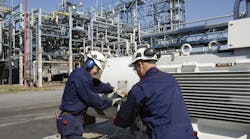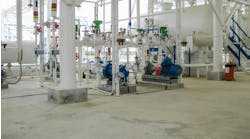Energy Saver: Incorporate Upgrades Right From The Start
Substantial pressure exists to design and build chemical plants and refineries as fast as possible, and with the lowest capital investment. It’s often argued that enhancements, including those that improve energy efficiency, can wait until the plant is running and producing revenue. However, this logic has at least two weaknesses.
First, it’s inevitably more difficult to install equipment after a plant has been commissioned, because you either have to carry out the installation in the midst of a busy, working facility — with all the inconvenience and added hazards that causes, or do it during a shutdown, which adds to the project costs, and also results in expensive lost production.
Second, quite apart from shutdown premiums, the economics of energy efficiency revamps are inherently less attractive than improvements incorporated in new designs because of what I call “the greenfield advantage.”
Consider a plant that requires a motor-driven centrifugal pump with a shaft power of 500 kW. The designers consider two options — a “standard” motor/pump combination, and a “premium efficiency” motor/pump combination. The main equipment item cost for the standard option is $150,000 while the high-efficiency option is 10% higher, or $165,000. If we assume a Lang factor of 4, the total module costs are $600,000 and $660,000, respectively — a difference of $60,000 in total module costs.
The annual electric power costs for the two options are $500,000/yr and $450,000/yr, respectively — a difference of $50,000/yr in energy costs.
The simple payback on the upgrade to the high-efficiency combination is therefore 60,000/50,000, or 1.2 years — assuming the upgrade is made in the initial design.
Let’s suppose the plant is built with the standard motor/pump combination, to minimize initial costs. The plant owners later consider a revamp project to replace it with the high-efficiency combination. The savings are the same as in the new plant analysis ($50,000/yr), because we are comparing the performance of the same two equipment options. However, the revamp project must bear the full cost of the new, high-efficiency motor/pump combination. If we assume that all of the existing infrastructure (foundations, piping, control, etc.) can be retained in the revamp, the total cost would be little more than the cost of the main equipment items, or $165,000. The simple payback is now 165,000/50,000, or 3.3 years. This is nearly three times longer than if the upgrade had been made in the original design.
This simplified example contains many assumptions that an astute reader might reasonably challenge. However, the overall conclusion is clear: When you replace an existing piece of equipment with an upgrade, you typically pay full price for the new item, while only gaining the incremental benefit between it and the old equipment. However, if you incorporate the upgrade in the initial design, you get the same benefit with much less incremental cost. Consequently, the overall economics of incorporating energy-efficient equipment into manufacturing facilities are generally much more favorable in new plant designs than they are in revamps. This conclusion applies not only to pumps and motors. It’s equally applicable to a wide range of equipment types, including boilers, furnaces, heat exchangers and insulation.
This doesn’t mean there are no attractive revamps that improve energy efficiency. On the contrary, there are many. Most of the best energy-efficiency revamp opportunities arise when equipment needs replacing or upgrading for other reasons. This might happen, for example, when a boiler or a pump reaches the end of its useful life. In these situations, the minimum cost option is usually a like-for-like replacement. However, it’s generally possible to install high-efficiency equipment for a relatively small incremental cost — the economics can be very favorable, just as in the new plant (greenfield) case. Doing a like-for-like replacement is a wasted opportunity. You often can justify high-efficiency equipment or upgraded systems (e.g., heat integration) when new facilities are needed to debottleneck an existing plant. Another common situation involving replacements or upgrades is environmental compliance; this can create viable opportunities to install more-energy-efficient equipment. We can generalize this principle by saying “the greenfield advantage” applies not only to efficiency upgrades in new plant designs, but also to revamps that combine energy efficiency with other objectives.



